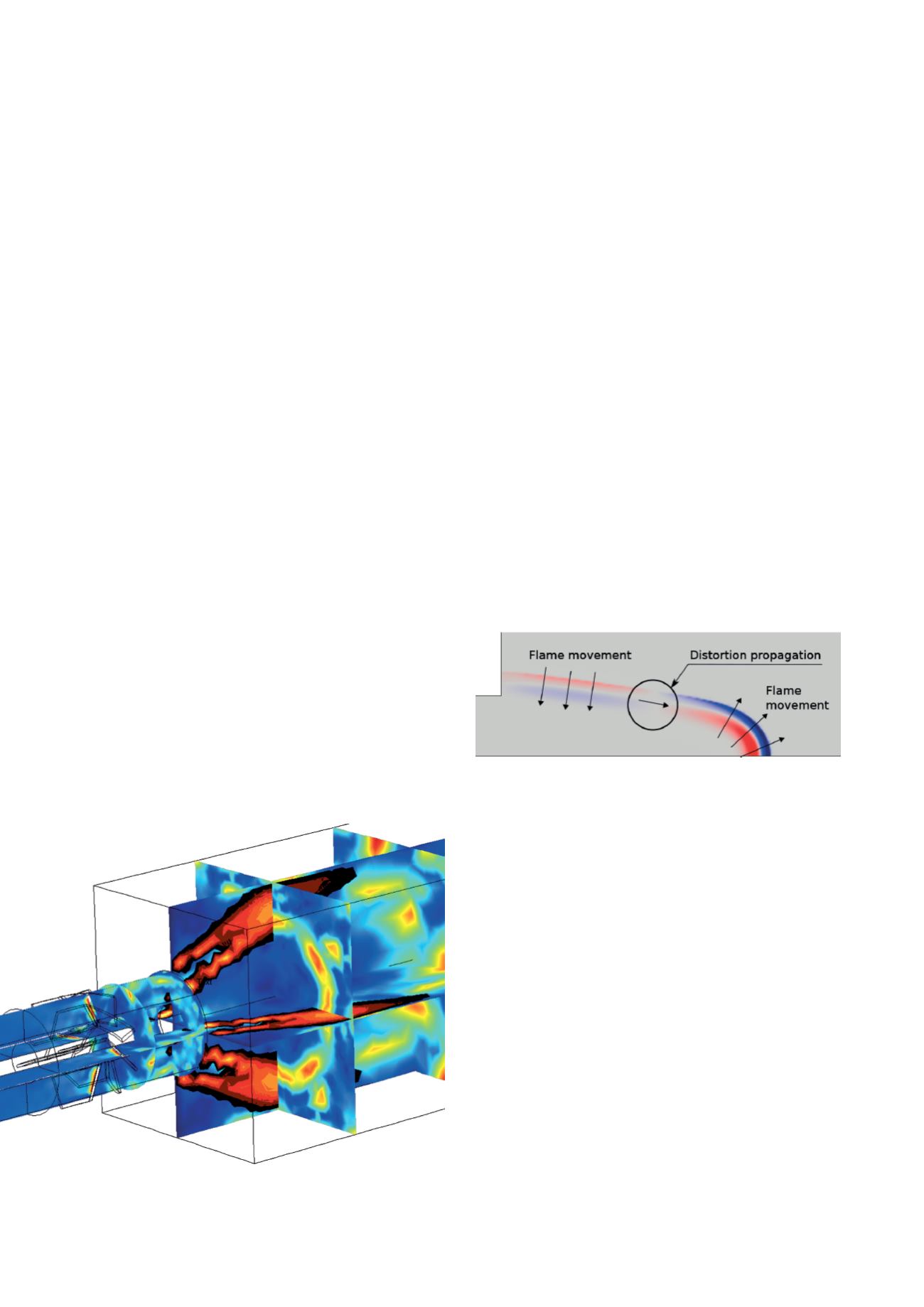

212
Thermo-Fluid Dynamics
High performance simulation with added value
n
In 2017 we have made significant progress in the development of modelling concepts and sim-
ulation software for combustion dynamics and combustion noise. Furthermore, consequences of
intrinsic thermoacoustic feedback for the convective scaling of eigenfrequencies were elucidated.
Thomas Emmert was awarded the Dissertation Prize of
the Faculty of Mechanical Engineering for his doctoral
thesis ‘State Space Modeling of Thermoacoustic Systems
with Application to Intrinsic Feedback’.
Wolfgang Polifke and Camilo Silva contributed a course
with the title ‘Systemidentifikation bei Unsicherheiten – Nix
g’naus woas ma ned’ to the Ferienakademie Sarntal.
Research Focus
In recent years, the research efforts of the TFD group have
focused almost exclusively on thermoacoustic combus-
tion instabilities. This type of self-excited instability results
from feedback between fluctuations of heat release rate
and acoustic perturbations of velocity and pressure,
and may occur in combustion applications as diverse as
domestic heaters, gas turbines or rocket engines. Pos-
sible consequences are increased emissions of noise or
pollutants, limited range of operability or severe mechan-
ical damage to a combustor. Thermoacoustic instabilities
have hindered the development of low-emission, reliable
and flexible combustion systems for power generation
and propulsion. Due to their multi-scale and multi-physics
nature, the prediction and control of such instabilities is a
very challenging problem with manifold exciting research
opportunities.
Linearized (Reactive) Flow Solvers
Analysis of thermoacoustic combustion instabilities is
typically based on linearized perturbation equations for
compressible reactive flow, with important effects of
convection by mean flow. A discontinuous Galerkin finite
element method with superior accuracy and stability for
this type of equation has been developed in the TFD
group. Combined with the state-space framework of the
in-house taX software, this method makes possible the
computation of transfer functions and thermoacoustic
Axial velocity of the unstable, intrinsic thermoacoustic eigenmode of a swirl
burner (from Meindl et al., submitted to J. Comp. Phys).
Distribution of heat release rate fluctuations of the intrinsic thermoacoustic
eigenmode of a laminar flame (from Avdonin et al., submitted to Proc.
Combust. Inst., 2018).
eigenmodes with unprecedented speed and flexibility.
Inclusion of a linearized source term for species pro-
duction and heat release allows the explicit inclusion
of flow-flame-acoustic coupling in the computation of
thermoacoustic eigenmodes, which has hitherto not been
possible. Inertial waves as well as entropy waves can also
be described in this framework. First results on the propa-
gation speed of inertial waves, the effect of inertial waves
on flame dynamics, and the source term of entropy waves
have been achieved and published. Such fundamental
investigations of flow-flame-acoustic interactions provide
important guidance for the proper formulation of analysis
and design tools for thermoacoustic stability.
Project
■■
AG Turbo COOREFLEX, FVV ‘Vorhersage von Flam-
mentransferfunktionen’



















